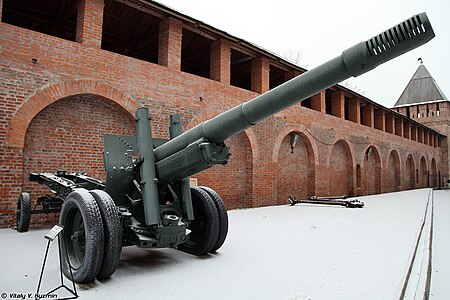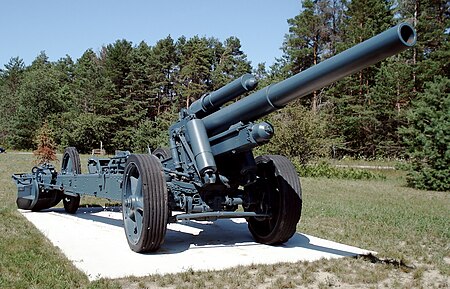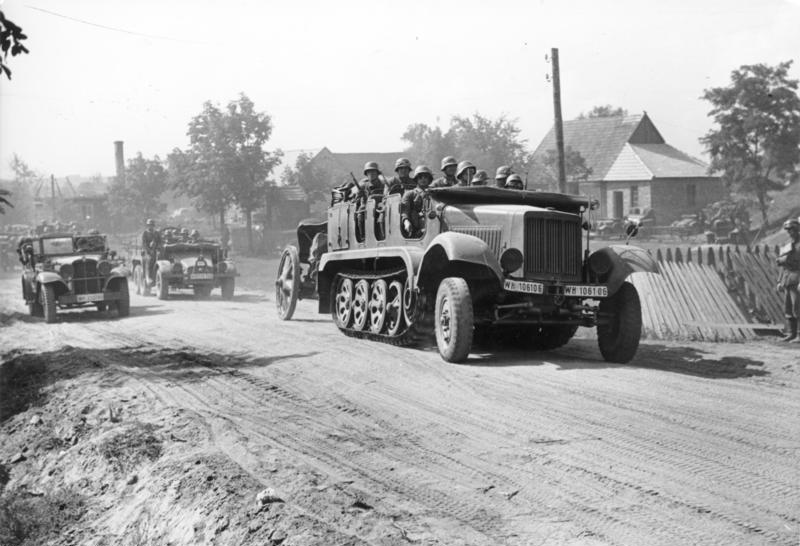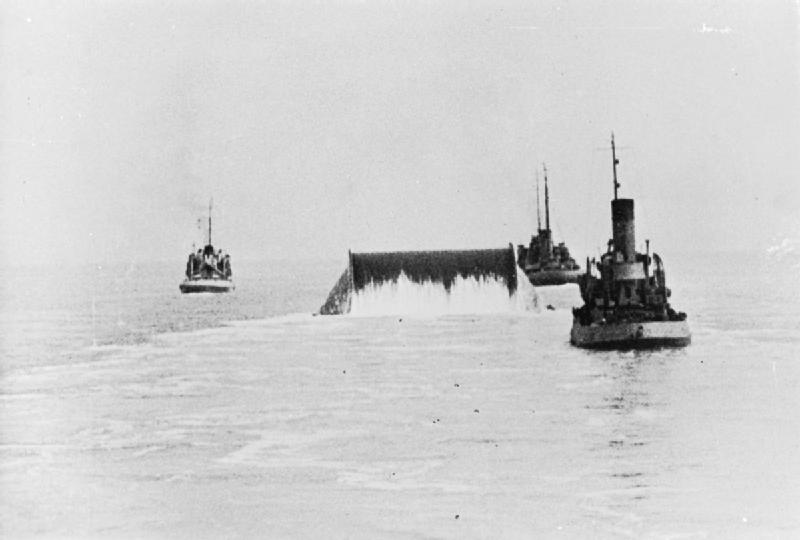When we compare WW2 armies virtually always discussion goes to comparison of tanks. There are thousands of threads and videos comparing tanks, their numbers and quality.... But we should not forget that artillery played not less important role than tanks in the war, probably even much more important.
The artillery in WW2 was overwhelmingly towed.


Here German 150-mm sFH 18 howitzer and Soviet ML-20 152-mm howitzer. No major difference here. So whats to compare there?
One of the major factor of German success was large number of fast and powerful artillery tractors:

During the WW2 Germans produced over 31,000 Sd.Kfz 6/7/8/9/11 artillery tractors with 115-270 hp engine and over 50 km/h max speed. This allowed Germans to move artillery together with tanks, providing them artillery support, swiftly concentrate the fire power in desired locations.
By comparison USSR produced less than 14,000 artillery tractors. Nearly 10,000 out of them were slow and underpowered STZ-5 (22 km/h max speed, 55 hp engine). When towing artillery their speed was barely 10 km/h. The remaining 4,000 were also much slower than German and were mostly lost in the beginning of the war (USSR stopped their production in favor of tanks).
As result during the entire war Soviets towed their artillery with slow STZ-5 and even more slow civilian tractors. Thats why Soviet tanks very often remained without artillery support, Soviets could not concentrate their artillery fire quickly.
For the sake of truth since 1944 USSR got some 200 US M5 fast artillery tractors and also produced some 1500 Ya-12 good quality artillery tractors with American supplied engines. They improved mobility but were not in sufficient numbers.
The second strong point of Germans was the total amount of artillery shells produced. Germany has extremely strong and developed chemical industries. Even under the massive allied bombings Germans produced more shells than Soviets:

In order to compensate German chemical industry advantage Soviets relied heavily on mortars which were much easier to produce and required cheaper lower quality explosives (you can see it in diagram).
But mortars have lower range and accuracy compare to regular artillery.
Also Soviets recieved huge help from the allies. 1/3 of all Soviet shells fired in the war were made with US supplied explosives. Nevertheless even in 1944 Germans fired more artillery shells than Soviets. Especially big advantage Germans had in heavy artillery.
The artillery in WW2 was overwhelmingly towed.


Here German 150-mm sFH 18 howitzer and Soviet ML-20 152-mm howitzer. No major difference here. So whats to compare there?
One of the major factor of German success was large number of fast and powerful artillery tractors:

During the WW2 Germans produced over 31,000 Sd.Kfz 6/7/8/9/11 artillery tractors with 115-270 hp engine and over 50 km/h max speed. This allowed Germans to move artillery together with tanks, providing them artillery support, swiftly concentrate the fire power in desired locations.
By comparison USSR produced less than 14,000 artillery tractors. Nearly 10,000 out of them were slow and underpowered STZ-5 (22 km/h max speed, 55 hp engine). When towing artillery their speed was barely 10 km/h. The remaining 4,000 were also much slower than German and were mostly lost in the beginning of the war (USSR stopped their production in favor of tanks).
As result during the entire war Soviets towed their artillery with slow STZ-5 and even more slow civilian tractors. Thats why Soviet tanks very often remained without artillery support, Soviets could not concentrate their artillery fire quickly.
For the sake of truth since 1944 USSR got some 200 US M5 fast artillery tractors and also produced some 1500 Ya-12 good quality artillery tractors with American supplied engines. They improved mobility but were not in sufficient numbers.
The second strong point of Germans was the total amount of artillery shells produced. Germany has extremely strong and developed chemical industries. Even under the massive allied bombings Germans produced more shells than Soviets:
In order to compensate German chemical industry advantage Soviets relied heavily on mortars which were much easier to produce and required cheaper lower quality explosives (you can see it in diagram).
But mortars have lower range and accuracy compare to regular artillery.
Also Soviets recieved huge help from the allies. 1/3 of all Soviet shells fired in the war were made with US supplied explosives. Nevertheless even in 1944 Germans fired more artillery shells than Soviets. Especially big advantage Germans had in heavy artillery.











